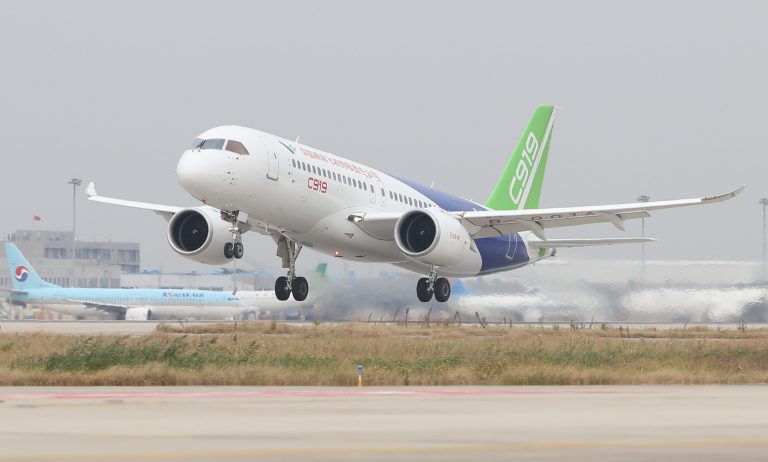The Commercial Aircraft Corp of China (COMAC) is set to deliver its first large passenger jet, the C919, to the plane’s first customer by the end of the year. Interestingly, around 40 percent of the plane’s suppliers are based in Europe and North America. The remaining suppliers are joint ventures whose partners include foreign firms.
While China-based companies provide wings and fuselage for the plane, most of the communication systems, flight control systems, and other core components are sourced from Western suppliers. When viewed from a value perspective, the share of Western input rises even further.
The engine of the plane comes from a joint venture between France-based Safran Aircraft Engines and U.S.-based General Electric. COMAC is reportedly thinking of integrating the CJ1000 jet engine manufactured by Aero Engine Corporation of China. However, the engine is not expected to be available for commercial use any time soon.
In short, Beijing’s ambitious project of having a passenger jet developed in China is actually dependent on contributions from foreign companies. Such dependence creates a huge problem for Beijing as any trade conflict with the West can end up with China being blocked from procuring these components. This has the potential to cripple its airline manufacturing industry.
The C919 is locking horns with industry veterans like Boeing and Airbus. COMAC wants to target the emerging markets, betting on its cheaper prices to gain an edge over rivals. The C919 is reportedly priced at $50 million, which is around half the cost of an Airbus A320neo.
Success
You are now signed up for our newsletter
Success
Check your email to complete sign up
However, COMAC faces big hurdles in the international market. The company’s previous plane, the ARJ21, has been heavily criticized for its numerous problems. It was deemed inferior to its competitors. The C919 is COMAC’s second plane.
According to Teal Group aviation analyst Richard Aboulafia, the ARJ21 was presented as proof that China is on its way to becoming the next big jet manufacturer. However, according to Aboulafia, the ARJ21 turned out to be an “overweight and stunningly obsolete product that has no relevance outside of China’s tiny regional airline sector.”
Beijing has set a target to make domestically manufactured passenger planes account for 10 percent of those in service on major routes by 2025. COMAC’s C919 plays a key role in realizing these ambitions. The passenger jet also forms a part of Beijing’s “Made in China 2025” goal that aims to cut down the country’s dependence on foreign technologies.
“National airlines have long been a marker of a state’s status and prestige in the international sphere, so it’s not surprising to see a new airline in China as its importance in global affairs grows,” Michelle Murray, professor and chairperson of the political studies program at the Bard College in New York, told the Architectural Digest.
One challenge facing COMAC is acquiring “type certification,” which designates the aircraft design to be “airworthy”. Whether an aircraft receives this designation or not is decided by influential regulators in the U.S. and Europe. COMAC has been trying to secure European certification for the C919, but those efforts have yet to be successful.The plane was scheduled to be showcased at the Airshow China in Zhuhai on Sept. 30. Instead, the company displayed a life-size exhibit of the plane’s cabin. At the event, an executive representing COMAC said, “Boeing and Airbus alone will not be enough to meet demand. The new option we’ll provide will be in the interest of the airlines.”














